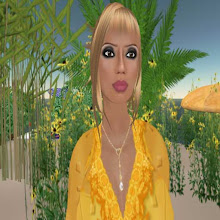About the Sanctuaries (Kalimantan Part IV)
Previous Related Posts:
Heading for Kalimantan, 12/05/05
The Klotok (Kalimantan, Part II) 12/11/05
Up the River (Kalimantan, Part III) 12/12/05
As you have probably gathered from my previous posts, the focus of my trip to Kalimantan (other than getting out of making offerings 12 hours a day for that upcoming cremation back in Bali!) was to visit Camp Leakey and Pondok Tanguii, orangutan sanctuaries and research centers established by Birute Galdikas many years before in the huge rain forest tract set aside as Tanjung Puting park land. (See the book Reflections of Eden : My Years with the Orangutans of Borneo by Birute Galdikas.) Before Galdikas, almost nothing was known of orangutans. Both their solitary nature and their high treetop lifestyle made them extremely difficult to study. Originally established as a research center, Camp Leakey quickly also became a santuary for orangutans who had done time in activity. At the time I went, there were still wild orangutans in the park, but the ones I met close up and personal were in the process of being rehabilitated back into the wild.
I love apes; I was an anthropology major, and I have followed research about non-human primates for years. In other words, this was a momentous trip for me; I was excited. It did not occur to me until a long time after the trip, that perhaps bringing visitors to the orangutans could put them at risk of disease and make it more difficult to rehabilitate them back into the wild. This, as I understand it, is the view held by Willie Smits, who heads another orangutan rescue organization which is very well respected. (See www.organgutan.com.)
When I went to the sanctuaries in Tanjung Puting, small groups of tourists were permitted, and they still are. Birute Galdikas has come under fire for her methods in recent years. (See Linda Spalding's A Dark Place in the Jungle: Following Leakey's Last Angel into Borneo and The Follow.) I do not take it upon myself to take up those issues here. I will say, however, that I later volunteered briefly to work for an Orangutan Foundation International fundraiser (Galdikas' organization), and I was quickly disillusioned. (For more information on this organization, see www.orangutan.org.) But that does not change the fact that Galdikas was the first. And it does not change the fact that wild orangutans exist only in Borneo and Sumatra (different varieties), and they desperately need our help.
Another group dedicated to the preservation of orangutans is the Sumatran Orangutan Society, http://www.orangutans-sos.org. They have offices around the world, including one around the back of Tegun, Megan and Kadek's shop on Jln. Hanoman in Ubud, Bali. I know nothing about SOS personally except they teamed up with IDEP to get aid into Aceh fast after the tsunami. (See my previous post, Tsunami .) Trying to help (i.e., donating to the cause) no matter which group you choose is certainly better than sitting back and watching orangutans become extinct, which is an imminent danger during our lifetime.


0 Comments:
Post a Comment
<< Home